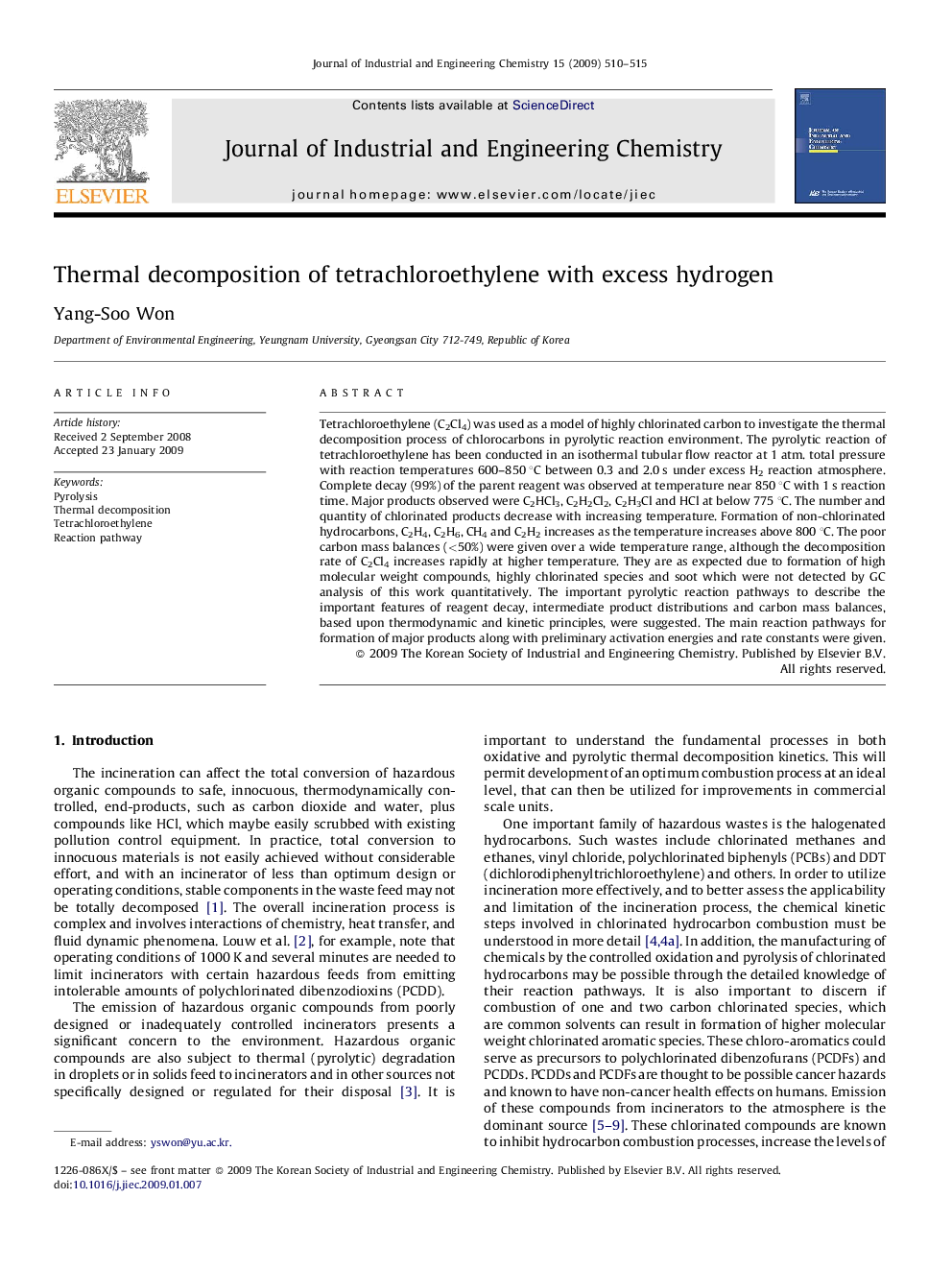| Article ID | Journal | Published Year | Pages | File Type |
|---|---|---|---|---|
| 228741 | Journal of Industrial and Engineering Chemistry | 2009 | 6 Pages |
Tetrachloroethylene (C2Cl4) was used as a model of highly chlorinated carbon to investigate the thermal decomposition process of chlorocarbons in pyrolytic reaction environment. The pyrolytic reaction of tetrachloroethylene has been conducted in an isothermal tubular flow reactor at 1 atm. total pressure with reaction temperatures 600–850 °C between 0.3 and 2.0 s under excess H2 reaction atmosphere. Complete decay (99%) of the parent reagent was observed at temperature near 850 °C with 1 s reaction time. Major products observed were C2HCl3, C2H2Cl2, C2H3Cl and HCl at below 775 °C. The number and quantity of chlorinated products decrease with increasing temperature. Formation of non-chlorinated hydrocarbons, C2H4, C2H6, CH4 and C2H2 increases as the temperature increases above 800 °C. The poor carbon mass balances (<50%) were given over a wide temperature range, although the decomposition rate of C2Cl4 increases rapidly at higher temperature. They are as expected due to formation of high molecular weight compounds, highly chlorinated species and soot which were not detected by GC analysis of this work quantitatively. The important pyrolytic reaction pathways to describe the important features of reagent decay, intermediate product distributions and carbon mass balances, based upon thermodynamic and kinetic principles, were suggested. The main reaction pathways for formation of major products along with preliminary activation energies and rate constants were given.
